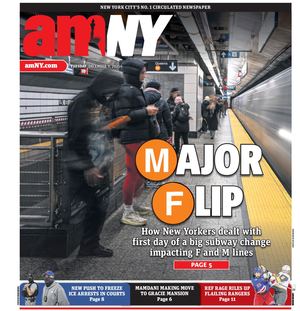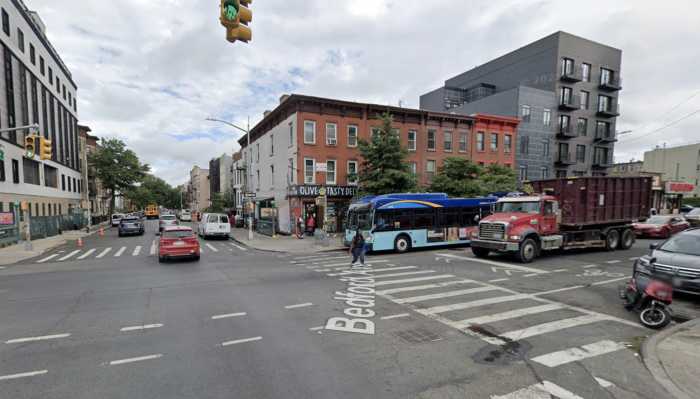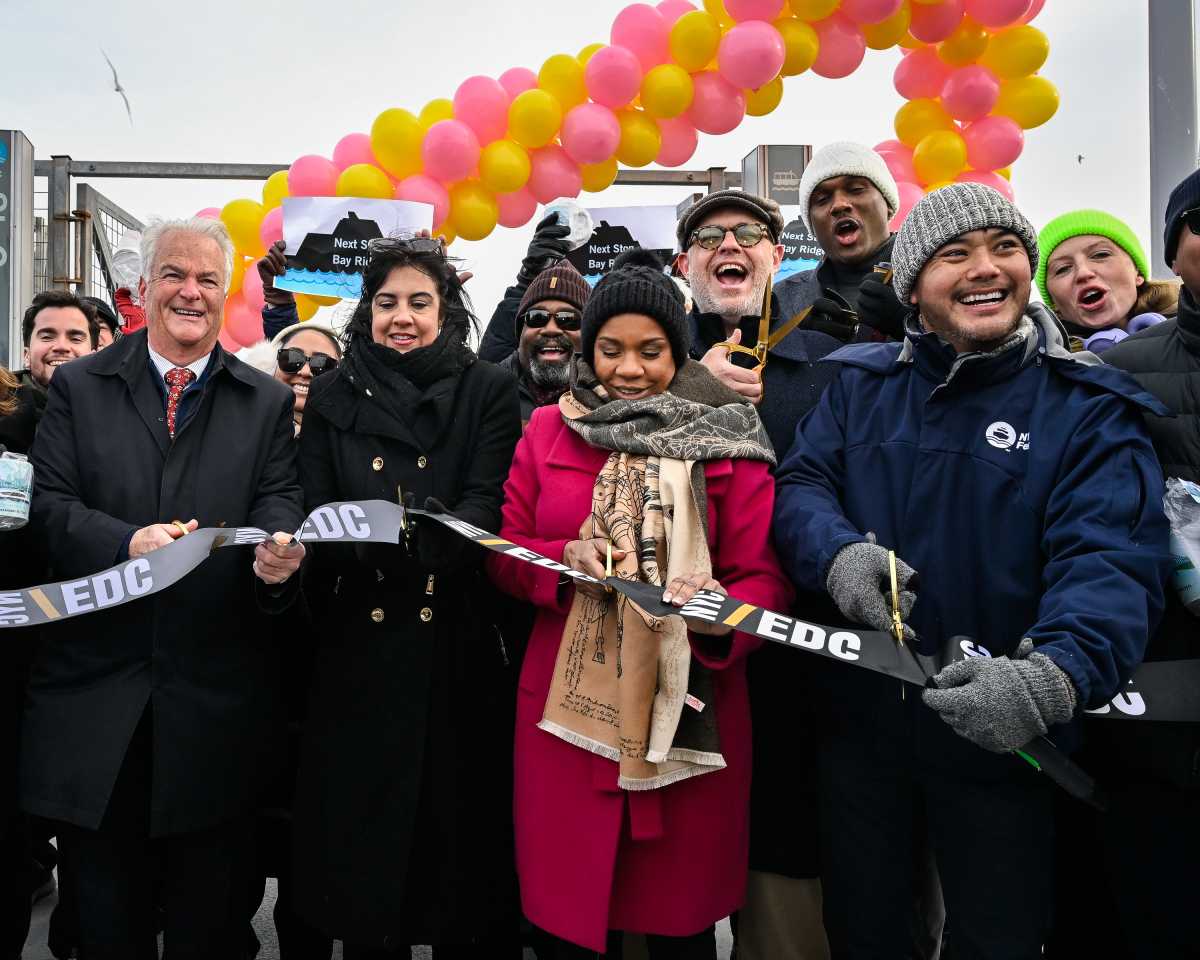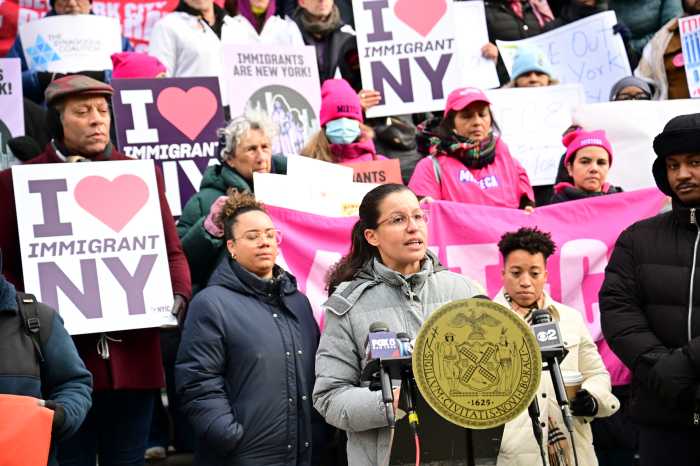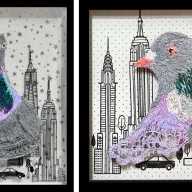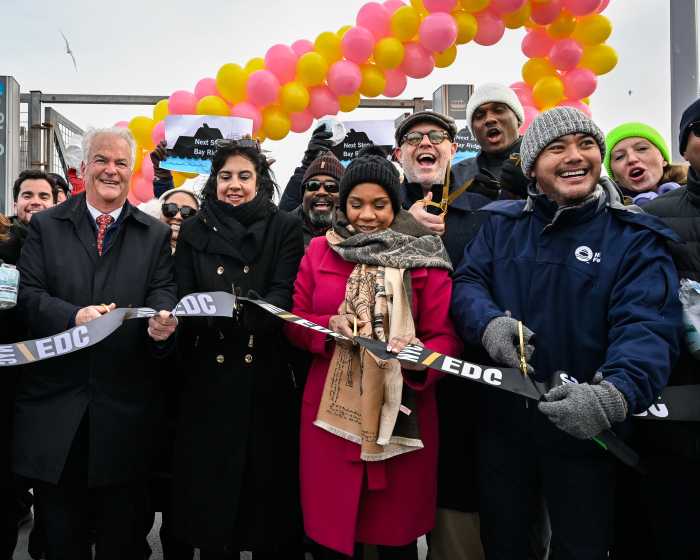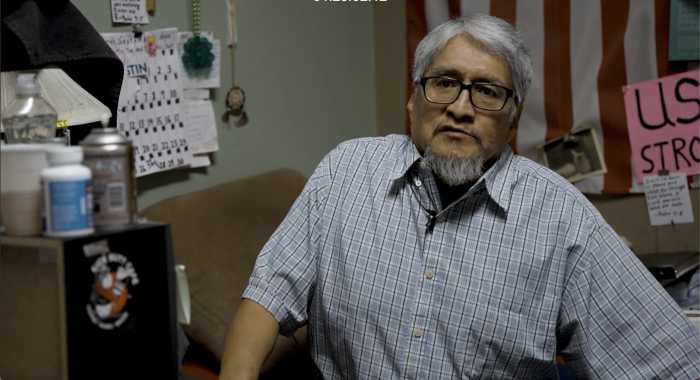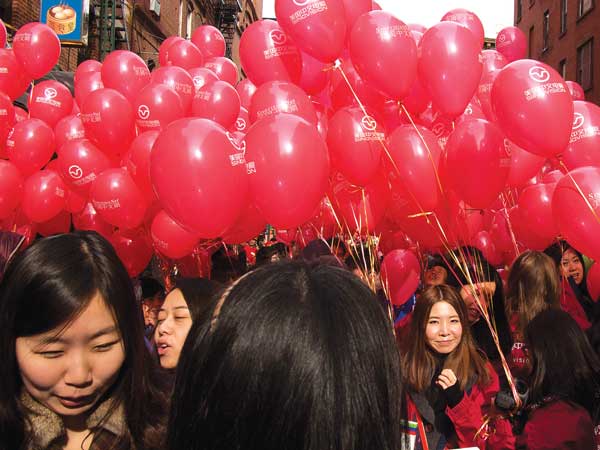 [/media-credit]
[/media-credit]
- Red is a staple color for the Chinese Lunar Year, but it has added significance when it comes to hongbao, the tradition of dispersing red envelopes filled with cash to unmarried relatives.
BY ZACH WILLIAMS | Economic difficulties afflicting Chinatown hardly put a damper on a Lunar New Year tradition that provides young people with a bit of economic stimulus.
According to tradition, the beginning of the year is in part observed by giving cash-filled, red envelopes [hongbao] to unmarried relatives. While economic considerations play a role in determining the amount given to someone, cultural considerations make them an integral part of celebrating the holiday — one that the current economy can affect only to a certain degree, said some Chinatown residents.
2012 is the Year of the Dragon in the lunar calendar. The mythical creature is exalted for its symbolic auspiciousness, which many city politicians said was a good omen for efforts aimed at revitalizing the local economy. The neighborhood was hit hard by the economic fallout following the Sept. 11 attacks and continues to face challenges stemming from its large foreign-born population and poverty among residents.
According to the 2010 U.S. Census, nearly one in five self-identified Asians in Manhattan live below the poverty line.
“Chinatown is not immune to the struggles other Manhattan neighborhoods face. It is expensive to live here, and the cost of living is going up,” said City Councilmember Margaret Chin, who represents Chinatown. “Businesses have a hard time getting loans, and it is nearly impossible to find affordable commercial space. The cost of doing business is also rising. Rents are higher, it’s more expensive to park, fines are higher.”
Chin added that the “lunar new year is a time for giving. Good or bad economy, everyone in Chinatown hands out red envelopes to kids and young people.”
While the exact origin of the Chinese hongbao tradition is unknown, the intent is well established. The red envelopes have been doled out for centuries, as gestures of good fortune with typical cash amounts ranging from a few dollars to several hundred.
Amounts usually decrease according to increasing age and distance in relations with most residents interviewed receiving about 10-20 hongbao per year, each usually with $10 to $20 inside. They may not provide the financial boost enjoyed by young people in China — but they do make a difference, said local residents.
The holiday also does not come with the long vacation time many workers in China enjoy. According to Egin Zheng, a native of Fujian Province who works in a restaurant near Columbus Park, cutting back on hongbao is not an option. Social tact and the need to appear economically prosperous despite economic difficulties also ensure that people give hongbao lest they lose face among peers, said Zheng. He added the holiday is an important respite from the hard work that defines his daily life.
“You cannot care about the economy now,” Zheng said. “Last week I gave my niece $100. I never say, ‘ah because of the economy, I’ll just cut it in half to $50.’ No, no, we don’t do that.”
In China hongbao often have a significant economic impact on young people, many of whom use the money to cover significant expenses in later months such as rent and food costs. Roy Zhu, 21, said in his native Shanghai he received the equivalent of about $700 per year as a teenager, enough to buy a new computer, among other expenses. This year living in New York City he received about $200.
But in the U.S., hongbao are ultimately given more for the cultural rather than economic value inside them.
“Giving out a hongbao is tradition. It doesn’t really matter how much it is. It’s supposed to bring you good luck and good fortune–the money in the red envelope. That’s the whole idea of it,” said Antley Chu, 24, of Brooklyn, who added the current state of the economy however “definitely affects” the amounts given in hongbao.
Jessica Ng, 24, a Chinatown resident, said she had received about $150 this year from hongbao, an amount that only goes so far in New York City.
“It’s just like a free dinner because everything is expensive here,” said Ng.
Community partners are needed to ensure that city services can reach across cultural and linguistic boundaries, help local businesses reach their full potential and boost the overall economy of the neighborhood, according to Chin, who said that “there are strong signs of growth”.
“The Chinatown Business Improvement District is forming and the Chamber of Commerce has grown in terms of members. Small businesses owners are becoming more organized,” Chin added.
Academic studies of the hongbao tradition are few, but a 2006 report from the University of California, Irvine examined the role of the practice in Southern California. While the role of money is an important element in the practice, a larger cultural richness looms.
“The envelopes serve as a means to demonstrate to the giver and receiver a shared cultural existence and common bond, and it is through the continued evolution of this timeless tradition that money itself will serve as means to unite a culture,” states the report.
